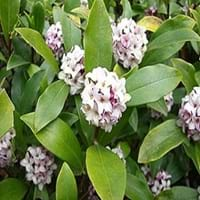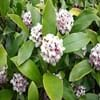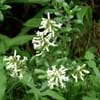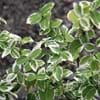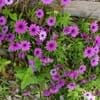Life Span
Perennial
Perennial
Type
Broadleaf Evergreen
Trees
Origin
China
Asia, Europe, North America
Types
Not Available
Black Ash, Blue Ash, California Ash, Carolina Ash, European Ash
Number of Varieties
Not Available
Habitat
Upland
Forest edges, Hillside, Woods
USDA Hardiness Zone
8-9
3-9
AHS Heat Zone
Not Available
12-8
Sunset Zone
21,22
9, 12, 13, 14, 15, 16, 17, 18, 19, 20, 21, 22, 23, 24
Habit
Oval or Rounded
Oval or Rounded
Flower Color Modifier
Bicolor
Not Available
Fruit Color
Crimson
Not Available
Leaf Color in Spring
Green, Dark Green
Dark Green
Leaf Color in Summer
Green, Dark Green
Dark Green
Leaf Color in Fall
Green, Dark Green
Dark Green
Leaf Color in Winter
Green, Dark Green
Dark Green
Leaf Shape
Elliptic
Oblovate
Plant Season
Spring, Summer, Fall
All year
Sunlight
Full Sun, Partial Sun, Partial shade
Full Sun, Part sun
Type of Soil
Loam
Loamy, Sandy
The pH of Soil
Neutral
Acidic
Soil Drainage
Well drained
Well drained
Bloom Time
Spring, Late Spring
Late Spring, Spring
Tolerances
Not Available
Drought, Pollution, Soil Compaction
Where to Plant?
Container, Ground, Pot
Ground
How to Plant?
Grafting, Seedlings
Grafting, Seedlings, Stem Planting, Transplanting
Plant Maintenance
Medium
Medium
Watering Requirements
Do Not over Water, Medium, Never Over-water, Requires regular watering, Water more in summer
Does not require lot of watering, Medium, Prefer drip-irrigation instead of Over-head watering
In Summer
Lots of watering
Lots of watering
In Spring
Moderate
Moderate
In Winter
Average Water
Average Water
Soil Type
Loam
Loamy, Sandy
Soil Drainage Capacity
Well drained
Well drained
Sun Exposure
Full Sun, Partial Sun, Partial shade
Full Sun, Part sun
Pruning
Prune in early spring, Remove damaged leaves, Remove dead branches, Remove dead leaves
Prune in winter, Prune prior to new growth
Fertilizers
Fertilize after blooming period, fertilize in growing season
All-Purpose Liquid Fertilizer
Pests and Diseases
Red blotch
Bark splits, Crown gall, Epicormic Sprouting, Woodpecker feeding
Plant Tolerance
Drought, Shade areas
Drought
Flower Petal Number
Single
Single
Foliage Texture
Medium
Medium
Foliage Sheen
Glossy
Glossy
Allergy
Skin irritation
Not Available
Aesthetic Uses
Beautification, Bouquets, Landscape Designing, Showy Purposes
Not Available
Beauty Benefits
Not Available
Not Available
Environmental Uses
Air purification
Air purification
Medicinal Uses
Diabetes, Nutrients, Wounds
Fever, Liver problems
Part of Plant Used
Leaves
Leaves, Stem
Other Uses
Decoration Purposes, Showy Purposes, Used as Ornamental plant, Used in paper industry
Used as Ornamental plant
Used As Indoor Plant
Yes
No
Used As Outdoor Plant
Yes
Yes
Garden Design
Cutflower, Foundation, Mixed Border
Shady Tree, Showy Tree
Botanical Name
DAPHNE acutiloba
Fraxinus
Common Name
Daphne plant
Ash Tree
In Hindi
डाफ्ने संयंत्र
राख पेड़
In German
Daphne Pflanzen
Esche
In French
plante Daphne
Frêne
In Spanish
planta de Daphne
Fresno
In Greek
Δάφνη φυτών
δέντρο Ash
In Portuguese
Daphne planta
Freixo
In Polish
Daphne roślin
Jesion
In Latin
Daphne plant
Fraxinum
Phylum
Not Available
Anthophyta
Class
Magnoliopsida
Magnoliopsida
Family
Thymelaeaceae
Oleaceae
Clade
Angiosperms, Asterids, Rosids
Angiosperms, Asterids, Eudicots
Tribe
Not Available
Oleeae
Subfamily
Not Available
Not Available
Difference Between Daphne and Ash Tree
If you are confused whether Daphne or Ash Tree are same, here are some features about those plants to help you choose better. Many people think that these two plants have the same characteristics, but one can see Daphne and Ash Tree Information and learn more about it. Fertilizers required for proper growth of Daphne are Fertilize after blooming period and fertilize in growing season, whereas for Ash Tree fertilizers required are All-Purpose Liquid Fertilizer. Hence, one should know the basic difference between Daphne and Ash Tree if you are planning to have them in your garden to enhance its beauty.
<
Flowering PlantsImportance of Daphne and Ash Tree
Want to have the most appropriate plant for your garden? You might want to know the importance of Daphne and Ash Tree. Basically, these two plants vary in many aspects. Compare Daphne and Ash Tree as they differ in many characteristics such as their life, care, benefits, facts, etc. Every gardener must at least have the slightest clue about the plants he wants to plant in his garden. Compare their benefits, which differ in many ways like facts and uses. The medicinal use of Daphne is Diabetes, Nutrients and Wounds whereas of Ash Tree is Fever and Liver problems. Daphne has beauty benefits as follows: Not Available while Ash Tree has beauty benefits as follows: Not Available.
Compare Facts of Daphne vs Ash Tree
How to choose the best garden plant for your garden depending upon its facts? Here garden plant comparison will help you to solve this query. Compare the facts of Daphne vs Ash Tree and know which one to choose. As garden plants have benefits and other uses, allergy is also a major drawback of plants for some people. Allergic reactions of Daphne are Skin irritation whereas of Ash Tree have Not Available respectively. Having a fruit bearing plant in your garden can be a plus point of your garden. Daphne has showy fruits and Ash Tree has no showy fruits. Also Daphne is not flowering and Ash Tree is flowering. You can compare Daphne and Ash Tree facts and facts of other plants too.
